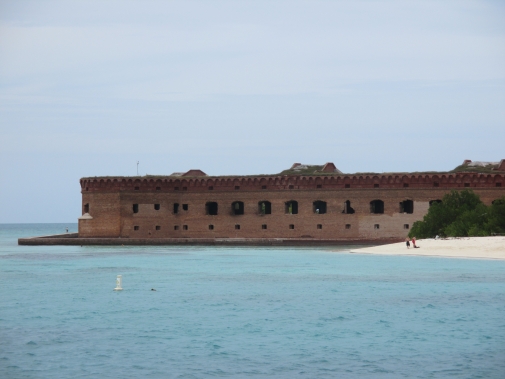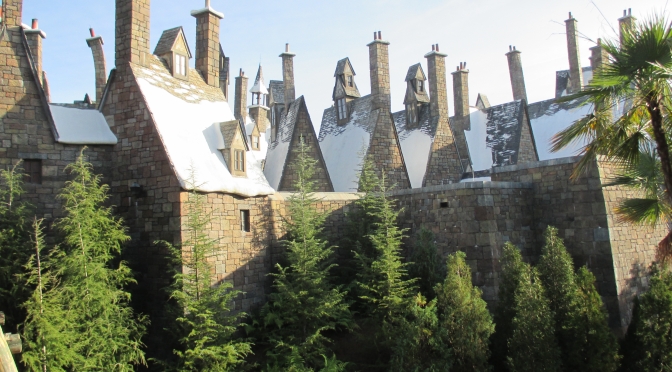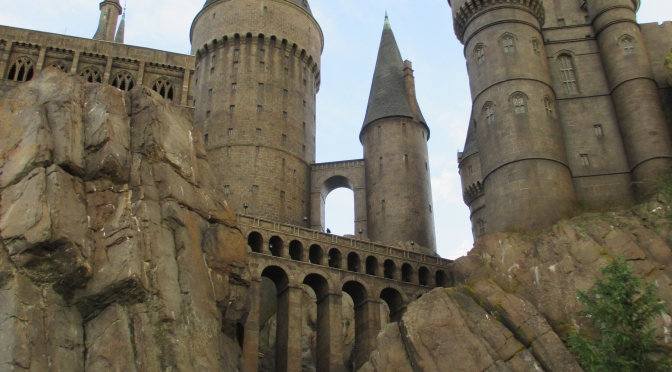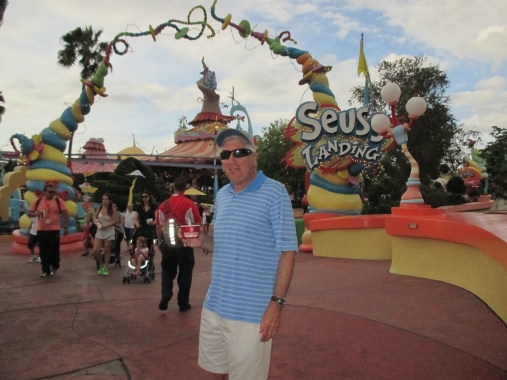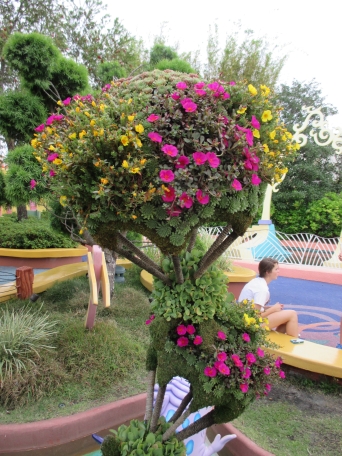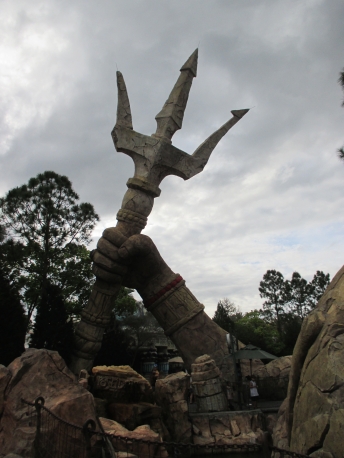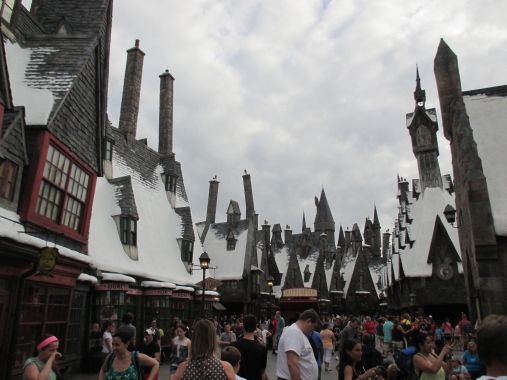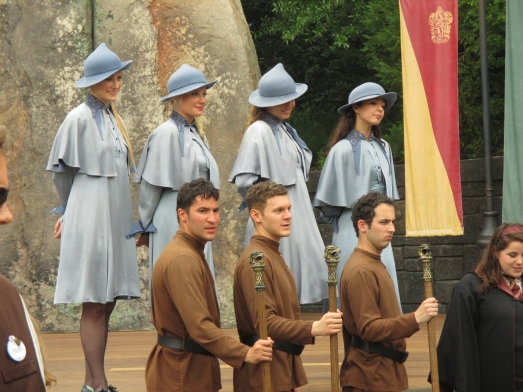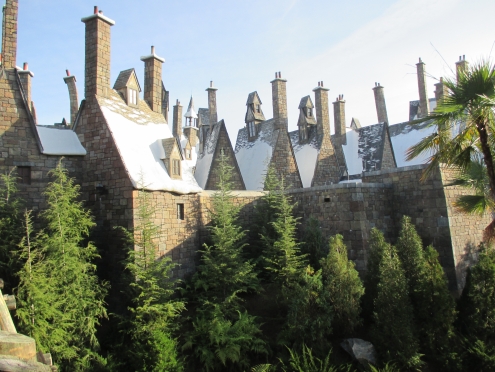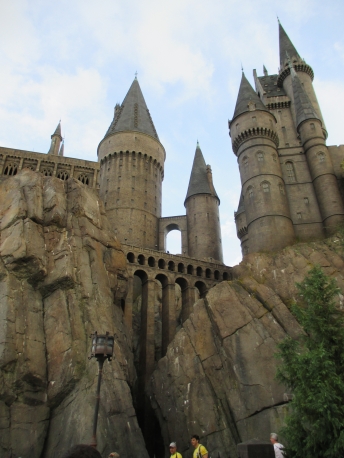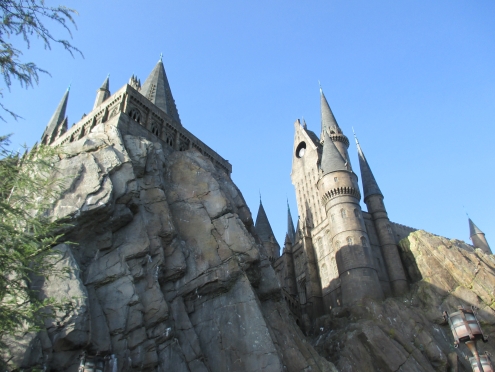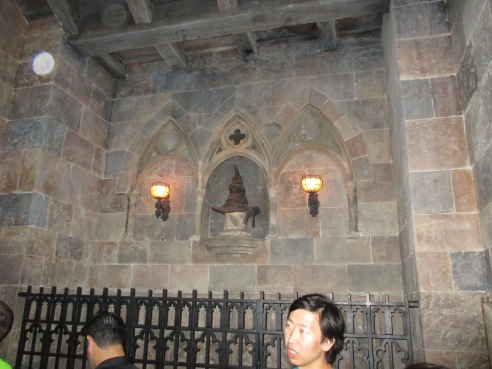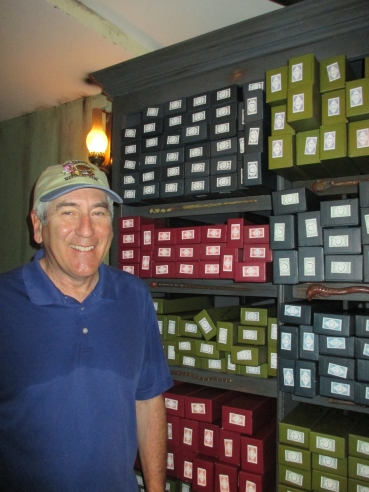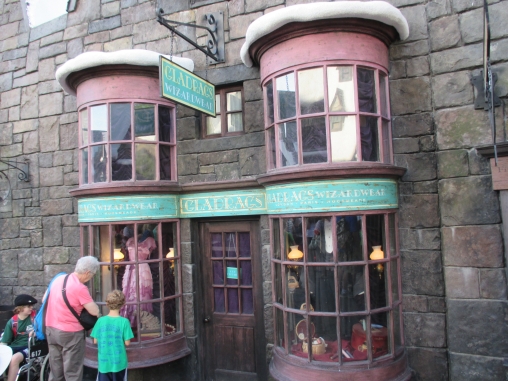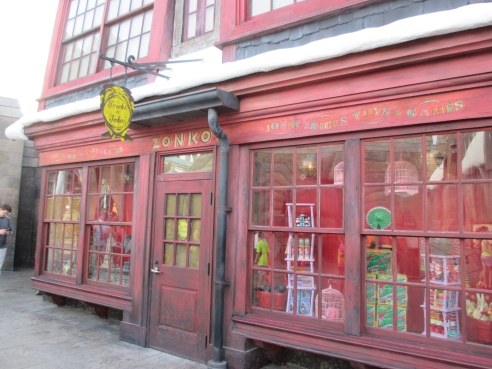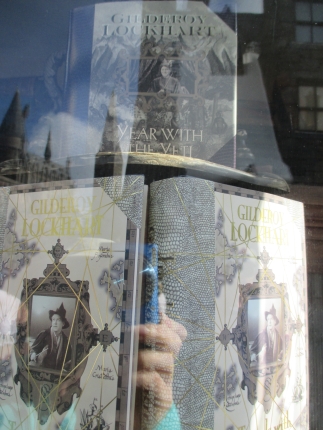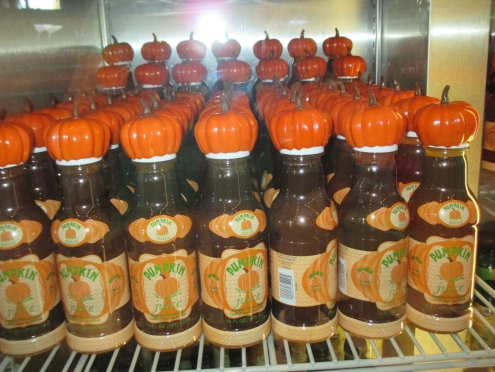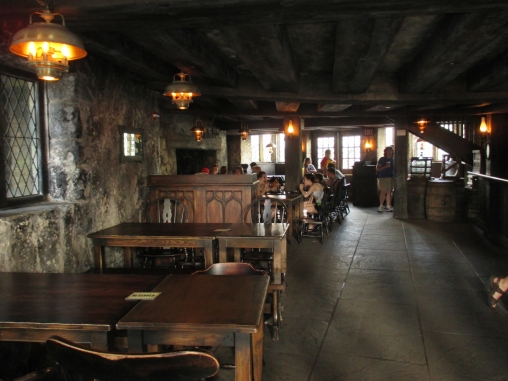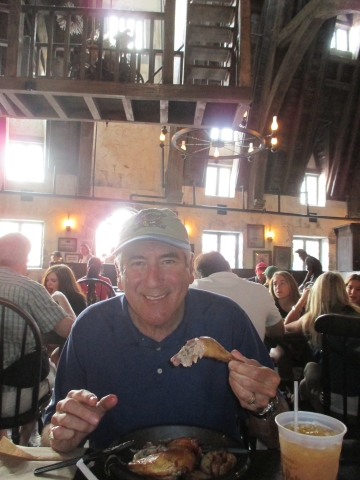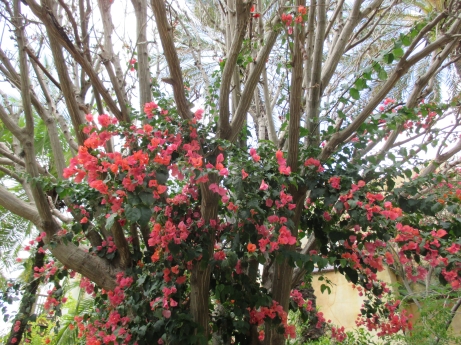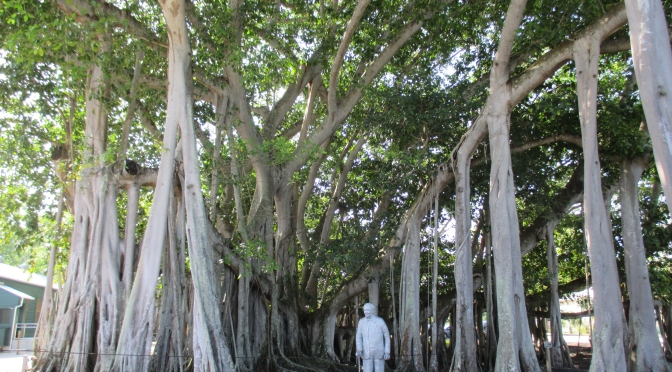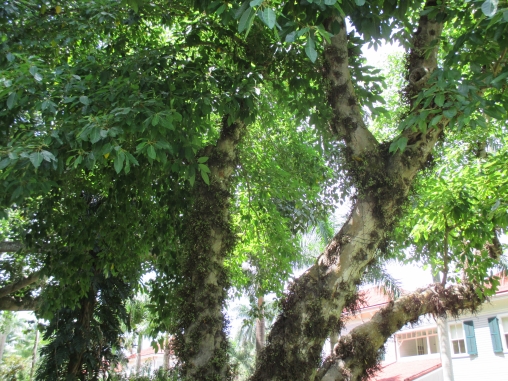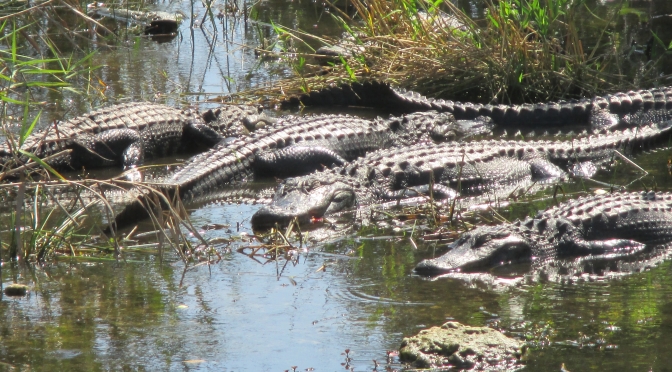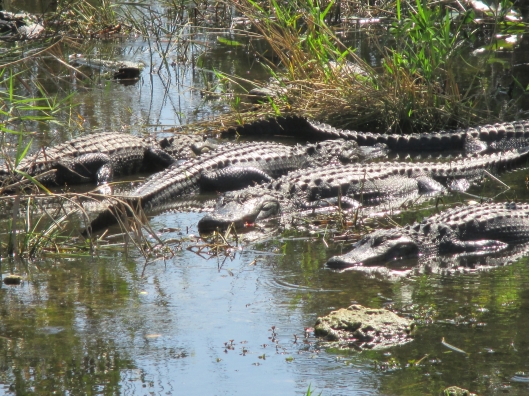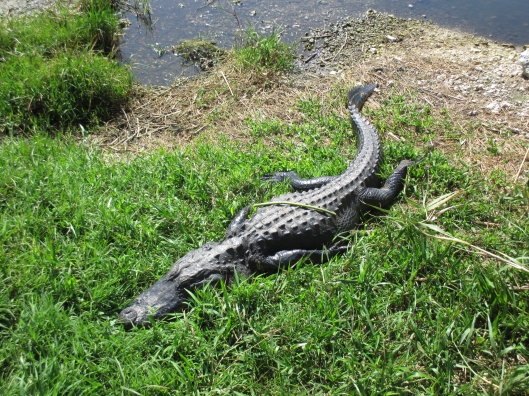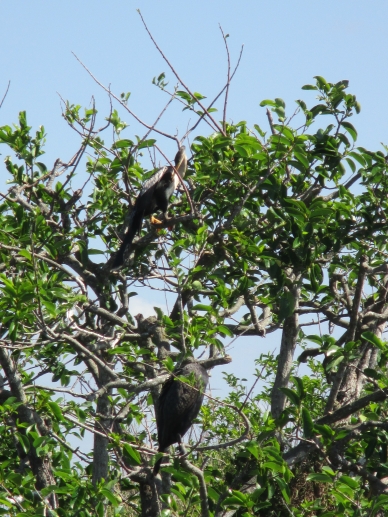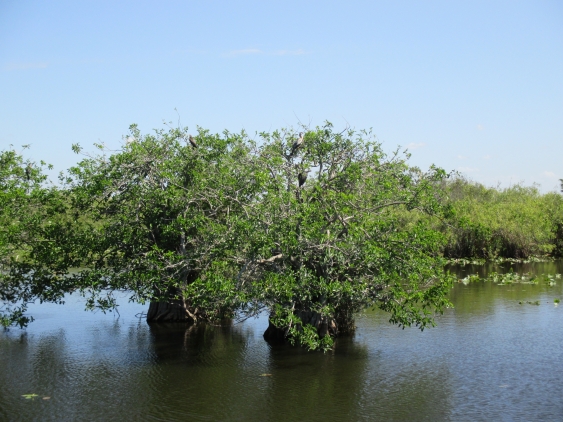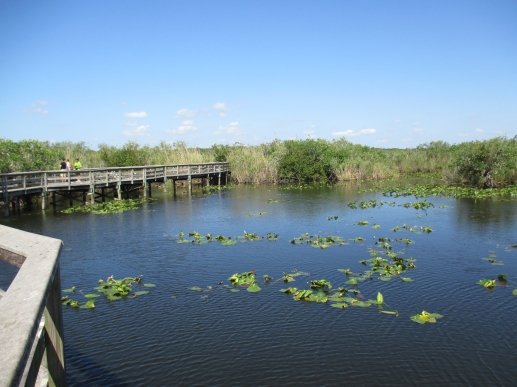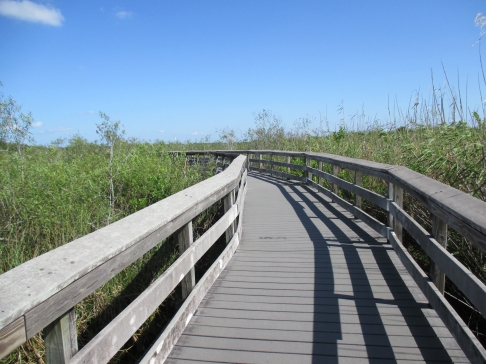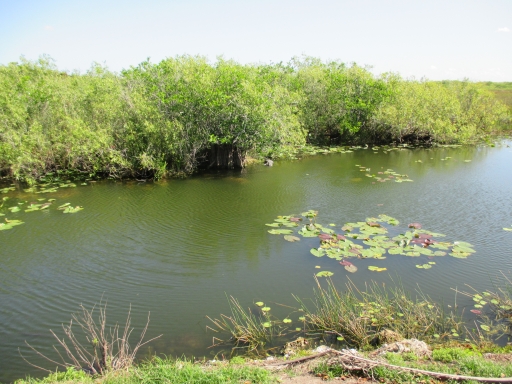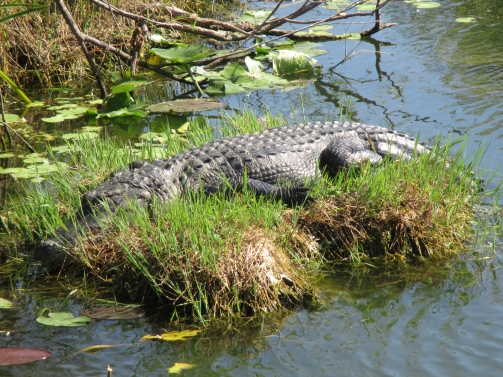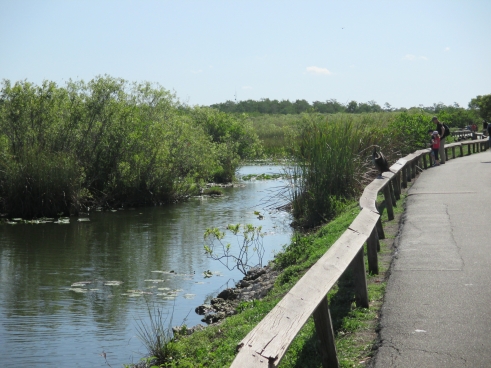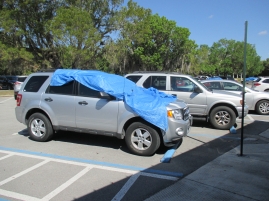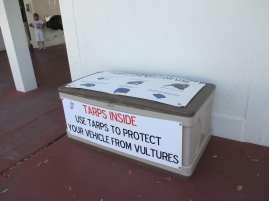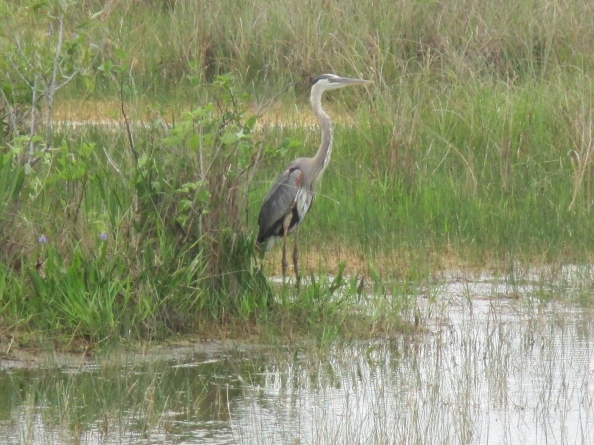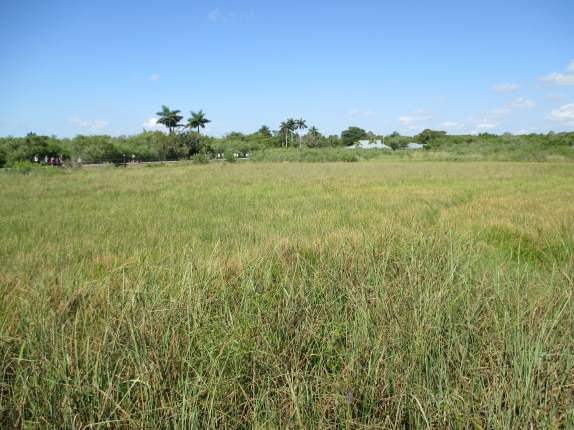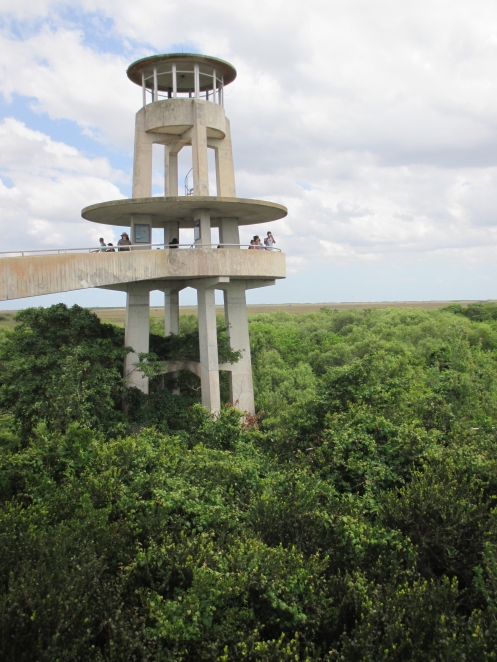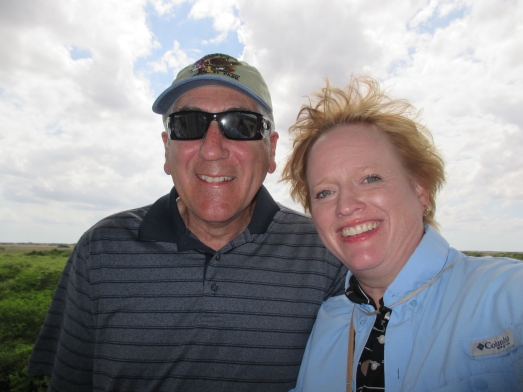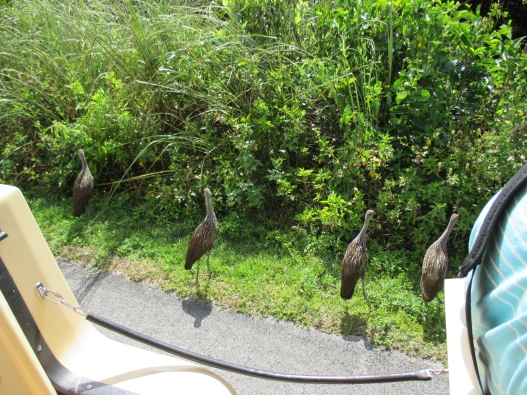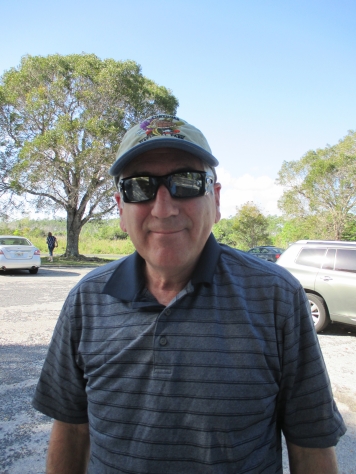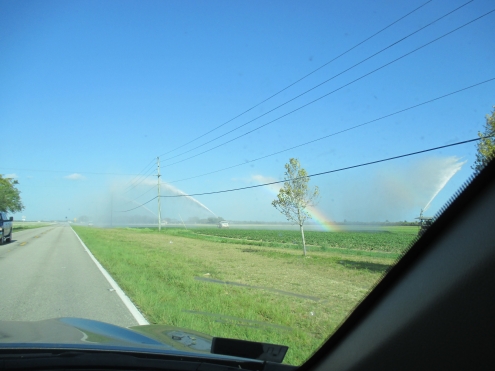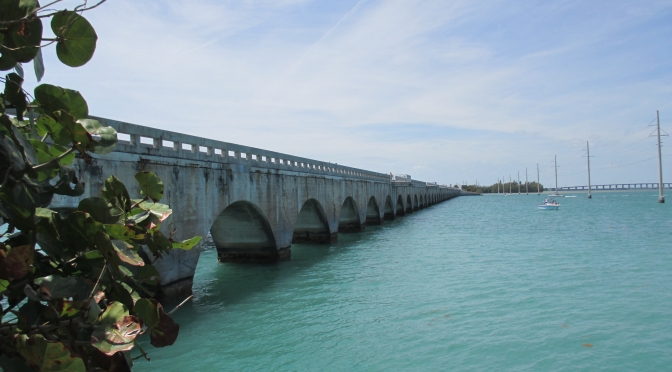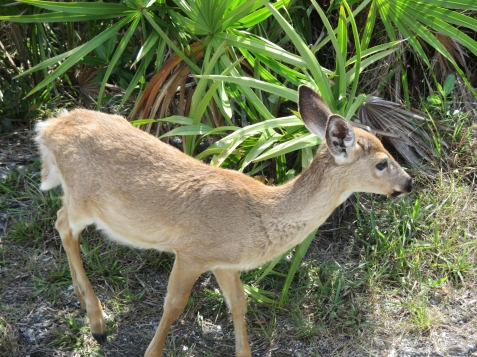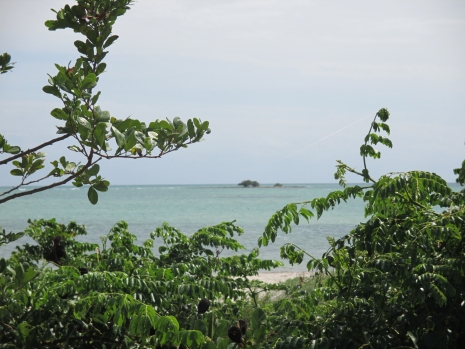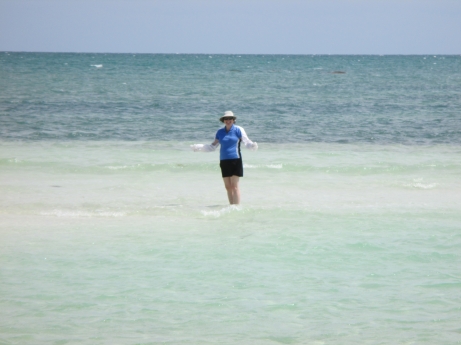

As you approach the Fort from the sea, it looks like it floats on the ocean.
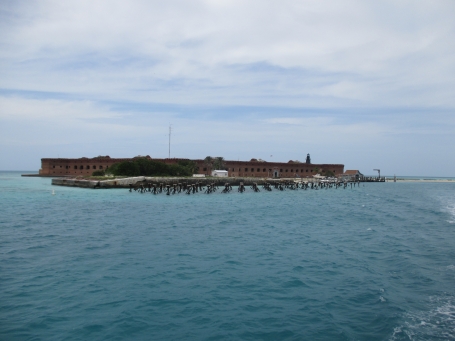
Around the back are all the docks.

The light house is about 3 miles from Fort Jefferson. That’s how far the guns at the fort could shoot with enough force to sink a ship.
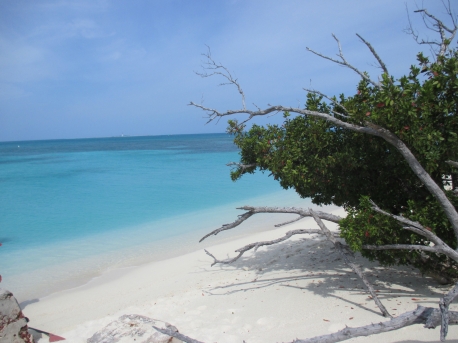
The sand is white and fine, the water a beautiful blue.
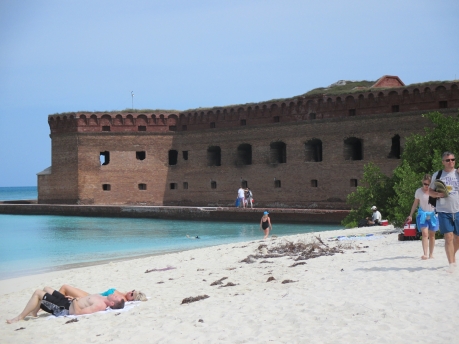
Here’s the beach at the fort. The corner of the fort has bastions where guns could shoot along the walls and repel anyone trying to scale them.

Yes, it has a moat. Here’s what it looks like on the land side, later you’ll see the ocean side and how the moat walls act like sea walls.
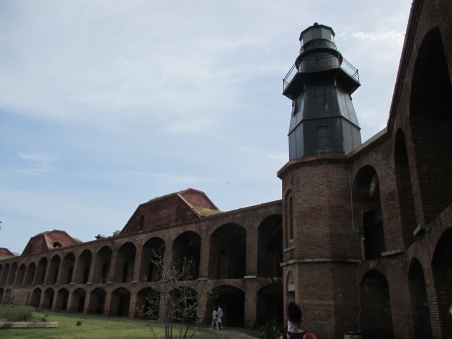
Inside the entrance to the fort.
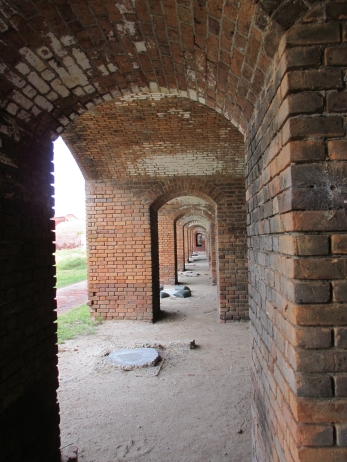
A look down the inside of one of the walls.
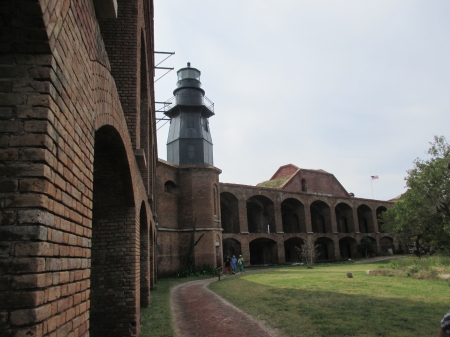
Here’s the lighthouse that still works to mark the safe harbor for any boat that needs it.
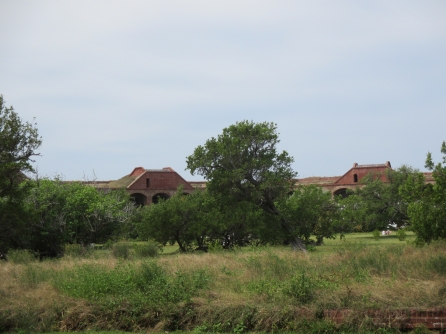
A view across the inside of the fort from ground level. It’s pretty big!

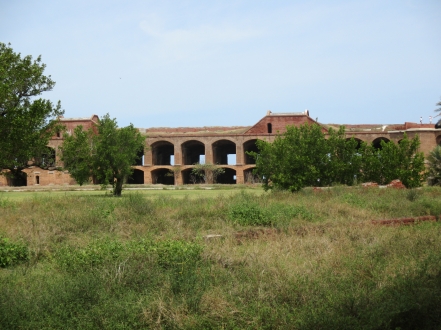
Another look across the parade ground.

The round structure was the magazine, but it was never used. The long ruin that runs in front of the magazine was the soldiers’ barracks. It was a 3 story structure and miserably hot. The men bunked in the second floor rooms in the walls where it was much cooler.
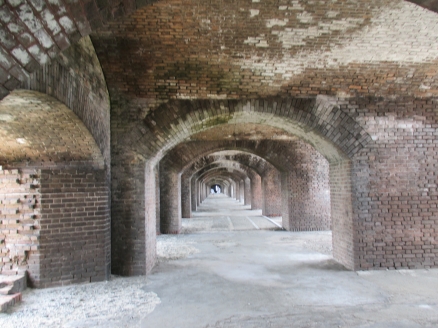
Another view down the inside of the fort’s walls. This was taken on the second floor.
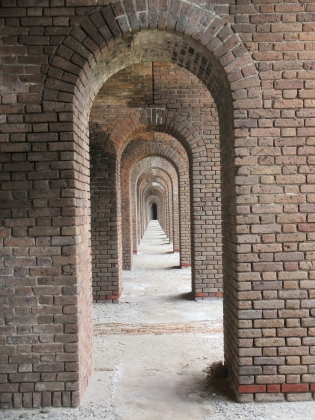
ditto
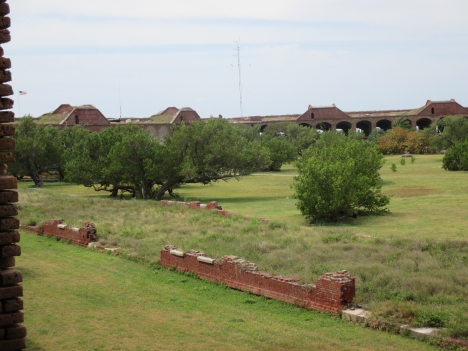
Another view, this one taken from the second story of the fort. Here you can see the ruins of the soldiers’ barracks. It was a huge, long structrue.
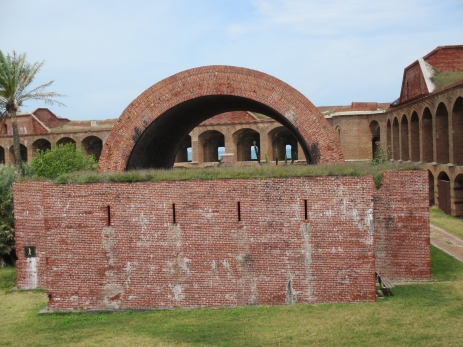
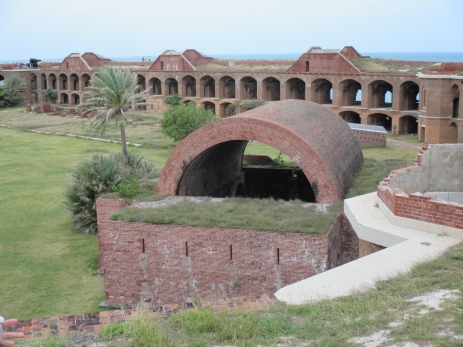
More views of the magazine.

Here’s the moat on the ocean side. The wall acts as a sea wall to protect the fort from large waves, etc.
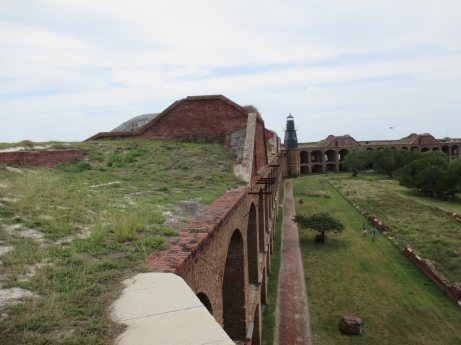
This was taken when we were on top of the walls. The tops were purposely covered with dirt and grass to absorb the shock of cannon fire. It is also part of the system designed to recover and store fresh water for the island.
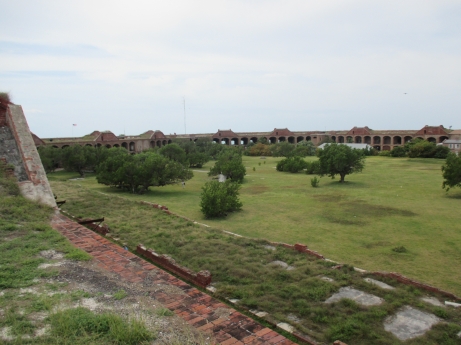
Another view from the top of the wall. You can see just how long the soldiers’ barracks were.
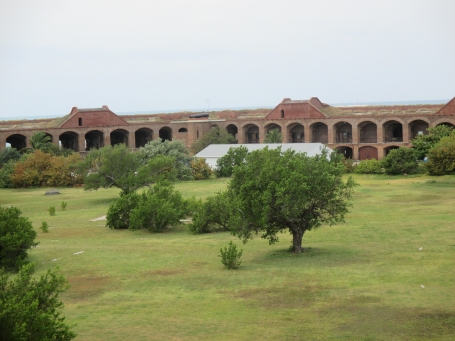
In our litigious society, the fort really amazed me. There are no guard rails anywhere. You can walk right to the edge of any of those big windows in the wall and fall right off. In fact, you can walk along the top of the wall which is very uneven, and easily slip. Our tour guide said in the 10 years he’s been working at the Park, only 2 people have fallen off the wall and both landed unharmed in the moat.
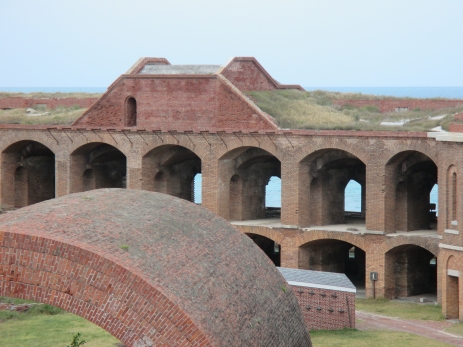
See what I mean about uneven footing on top of the walls?

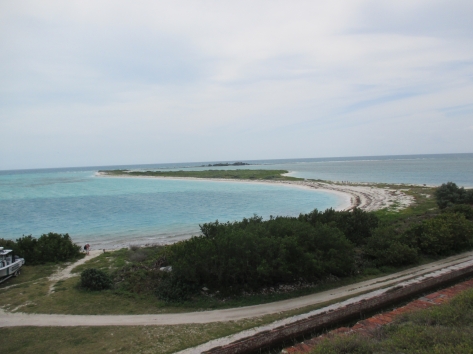
The green spot at the end of that narrow strip of sand is Long Key and the spot of green further out is Bird Key. Normally, they are separate islands. In the last 10 years, the sand bars that currently connect them have washed away and built back up twice.
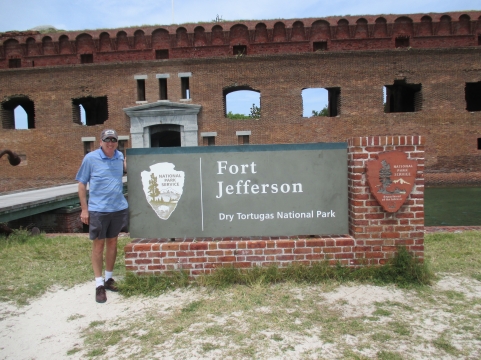
Here’s Bob!
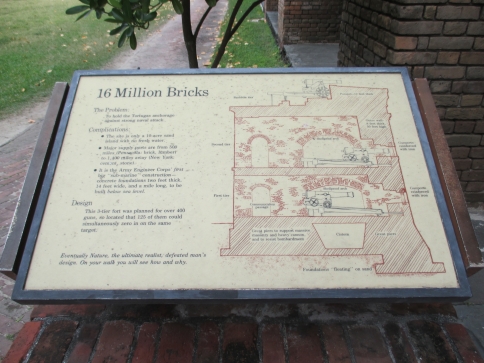
Here’s the story of how the fort was built.

Here’s some info on how they intended to collect and store fresh water. The water was supposed to filter through the dirt on top of the walls and funnel down through pipes inside the walls to underground storage tanks. However, the dirt they used on top of the wall was dredged from the channel, so when the water filtered through, it leached out all the salt in the soil and the water was undrinkable. Also, with settling, 106 of the 109 storage tanks sprung leaks and the water in them rose and fell with the tides. It was an engineering failure, but it was a nice try!

More passport stamps. 🙂
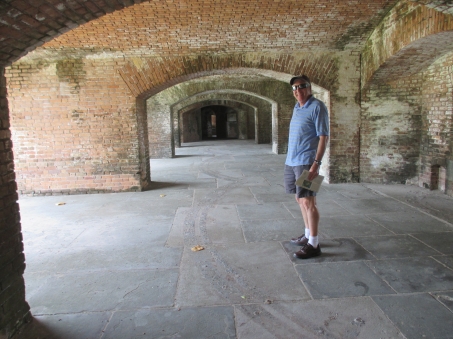
Here’s Bob in a gun port. Can you see the arc on the floor? That was a rail where the cannon’s back wheels sat. It allowed the men to swivel the cannon to aim it properly. You can see by the arcs that gun after gun after gun sat along these walls. There were supposed to be over 400 when the fort was finished—which it never was. It was abandoned in 1874.

Remember the dredged fill on the roof? The salt has leached down is forming stalagmites and stalactites on the roof and floor of the second story. It is very hard, as hard as the cement.
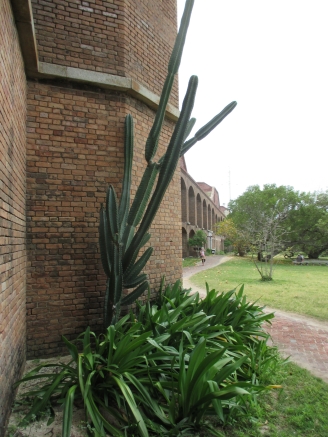

Another view from the top of the wall. Here you can see the two different colors of the brick used to build the fort. At first, the brick came from a brickyard in Pensacola. But when the South seceded from the Union, the brick had to come from Maine. Can you imagine shipping it that far?

Here’s one of the six guns that’s been restored at the fort. It sits on top of the wall.

This is the boat we arrived on.

Another view from the top of the wall. That entrance was the only way in or out of the fort. Originally, it had a drawbridge over the moat.

Here’s what the stairways look like.
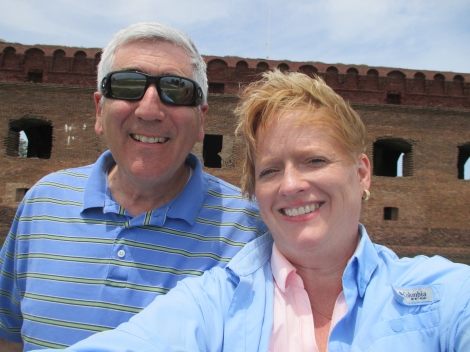
The intrepid tourists! Risking life and limb to get some good photos for this blog! (Not really, we would have climbed all over this place just for the fun if it.)
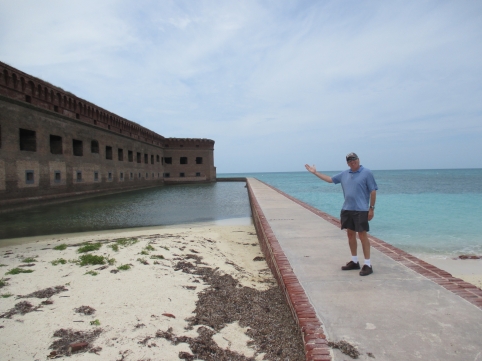
Bob on the sea wall.

The Moat is only a few feet deep. There was a joke among the prisoners that the moat had sharks in it, but it didn’t. However, as a joke, one of the soldiers did put a shark in the moat and it lived there about two weeks.

Those little windows on the bottom were where the guns were. Here, they are covered by black shutters. Those are heavy iron and they are weighted to hang perfectly. When a cannon was fired, the air pressure in front of the cannonball pushed the shutters open and allowed the cannonball to pass. Then, they immediately swung closed. That meant the men inside were only exposed to enemy fire for the brief second it took for the cannonball to pass through. Very clever design. Oh, the indents above the big windows were made to look like gun ports, but they were decoys. To a ship at sea, it would look like there were three layers of cannon, but there were really only two.


Time has taken a toll on the fort. Here the restoration is still in progress.

Another view of the moat and the beach. The fort was supposed to be 3 stories tall, but because it was so heavy and it was settling so badly, the Army Corp of Engineers decided to stop at two.

Did I mention there were pelicans everywhere? They were fun to watch. They looked like a cat pouncing playfully on a mouse. They’d just suddenly hop and dive at a fish in the water. It looked kamikaze.
